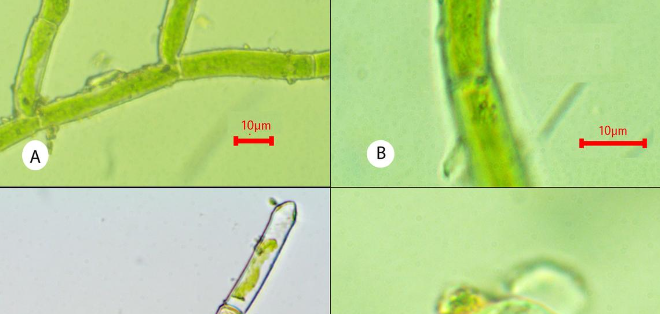New Algal Species Discovered in Kerala’s Western Ghats by Phycologists
Scientists from Catholicate College’s Department of Botany have found a new species of algae. This is a big step forward in our knowledge of the variety in the Western Ghats, an area of India’s mountains known for its many plant and animal species.
Background of the Discovery
The researchers Merin Grace Jiji, Binoy T. Thomas, and Thomas V.P. found this new species of algae in the forests of the Kumbhavurutty region in the Kollam district. They have called it Oedocladium sahyadricum. The Western Ghats have unique weather and soil conditions that make it possible for a wide range of land microalgae to grow.
Characteristics of Oedocladium Sahyadricum
Several things make oedocladium sahyadricum unique. The algae were first recognized because they are dioecious and live on land. They have an advanced operculum and oval oogonium and oospore for reproduction. It grows in wet soil as a soft green mat, and as it gets older, its colour changes to a yellowish-green and predominantly flourishes during the rainy season.
About the Western Ghats
- The Western Ghats stretch approximately 1,600 km along India’s west coast.
- They are older than the Himalayas.
- Recognized as one of the world’s eight ‘hottest hotspots’ of biological diversity.
- They harbor approximately 7,402 species of flowering plants, 139 mammal species, 508 bird species, and 179 amphibian species.
- Many species found in the Western Ghats are unique to the region.
- The Ghats significantly influence India’s monsoon weather patterns by intercepting the rain-laden monsoon winds.
- The highest point is Anamudi Peak in Kerala, at 2,695 meters.
- The ‘Valley of Flowers’ in the Western Ghats is famed for its seasonal blooms of endemic alpine flowers.
- UNESCO declared the Western Ghats a World Heritage site in 2012 due to its exceptional biodiversity and endemic species.
Month: Current Affairs - May, 2024
Category: Environment Current Affairs • Science & Technology Current Affairs








